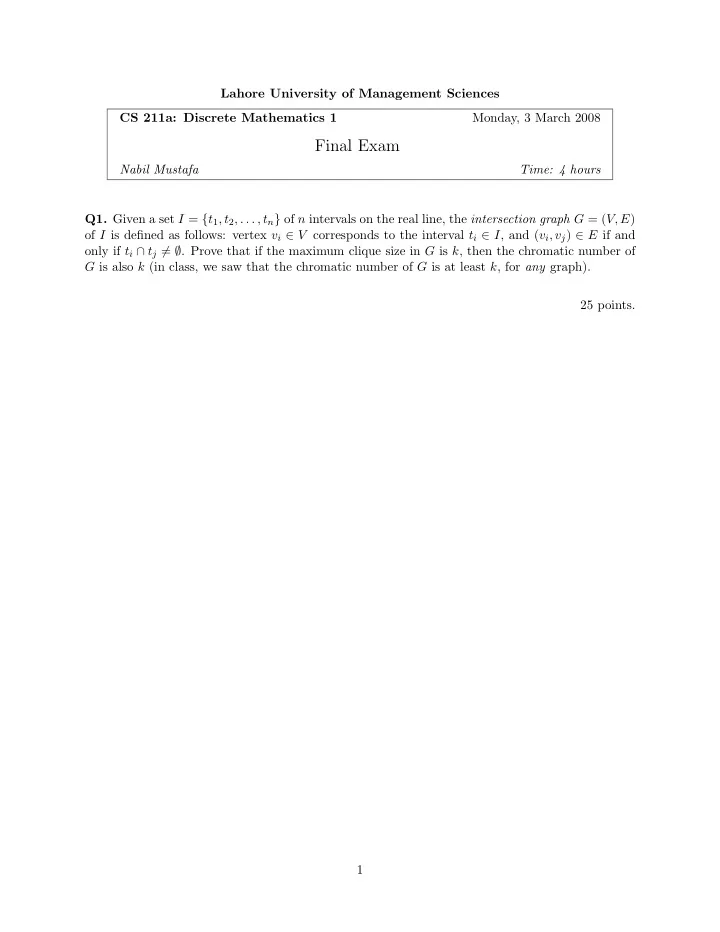

Lahore University of Management Sciences CS 211a: Discrete Mathematics 1 Monday, 3 March 2008 Final Exam Nabil Mustafa Time: 4 hours Q1. Given a set I = { t 1 , t 2 , . . . , t n } of n intervals on the real line, the intersection graph G = ( V, E ) of I is defined as follows: vertex v i ∈ V corresponds to the interval t i ∈ I , and ( v i , v j ) ∈ E if and only if t i ∩ t j � = ∅ . Prove that if the maximum clique size in G is k , then the chromatic number of G is also k (in class, we saw that the chromatic number of G is at least k , for any graph). 25 points. 1
Empty page 2
Q2. Prove the following: • Without using Hall’s theorem, give another proof of the following fact. We are given a bipartite graph G with n vertices in each partition, and where deg ( v i ) ≥ n/ 2 for all i . Show that G must contain a perfect matching. 10 points. • A rooted binary tree T = ( V, E ) is a tree with a specified “root” vertex v r , and each vertex has degree at most 3 (and the root vertex has degree at most 2). Then, the depth d ( v ) for any v ∈ V is defined as the length of the path from v to v r . Prove Kraft’s inequality : 2 − d ( v ) ≤ 1 � v where the summation is over all end-vertices v , excluding v r . 15 points. 3
Empty page 4
Q4. Prove the following: 1. The so-called Chv´ atal Principle : Given any graph G = ( V, E ), where the average degree of G is at least d , there exists a subgraph of G where every vertex has degree at least d/ 2. 15 points. 2. Every graph G with average degree at least d has, as its subgraph, every possible tree on d/ 2 vertices. 10 points. 5
Empty page 6
Q4. Determine the number of graphs on n vertices, with 1. no vertices of degree 0 15 points. 2. at least two vertices of degree 0 5 points. 3. exactly two vertices of degree 0 5 points. 7
Recommend
More recommend